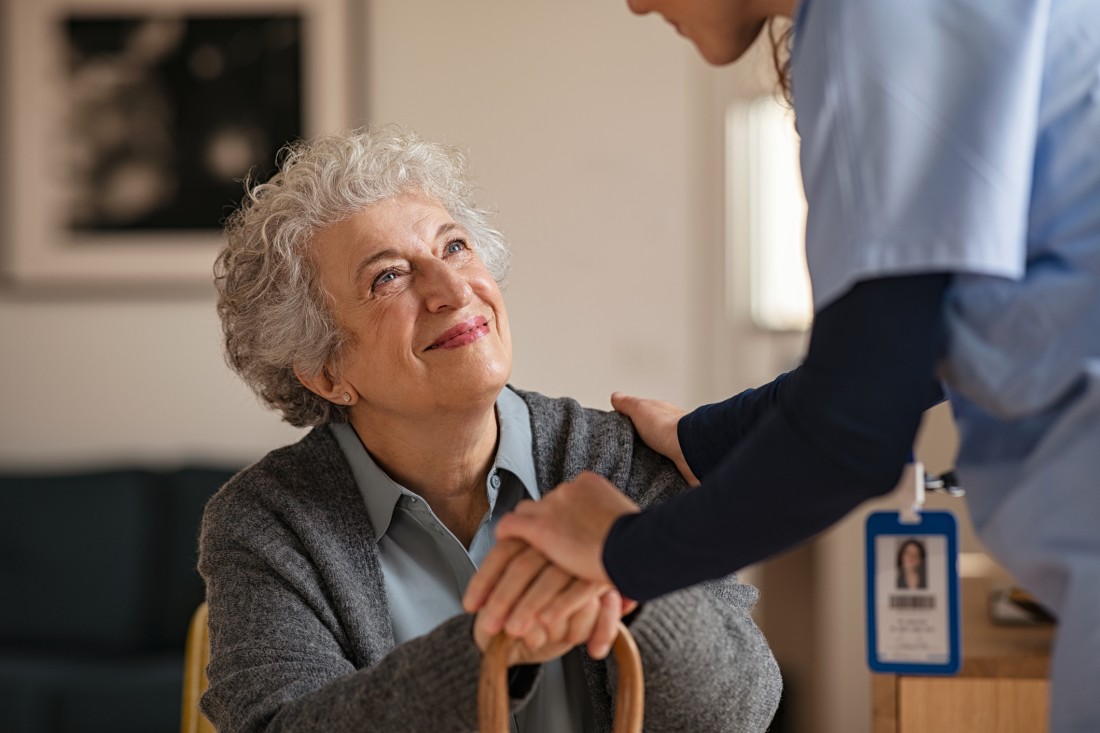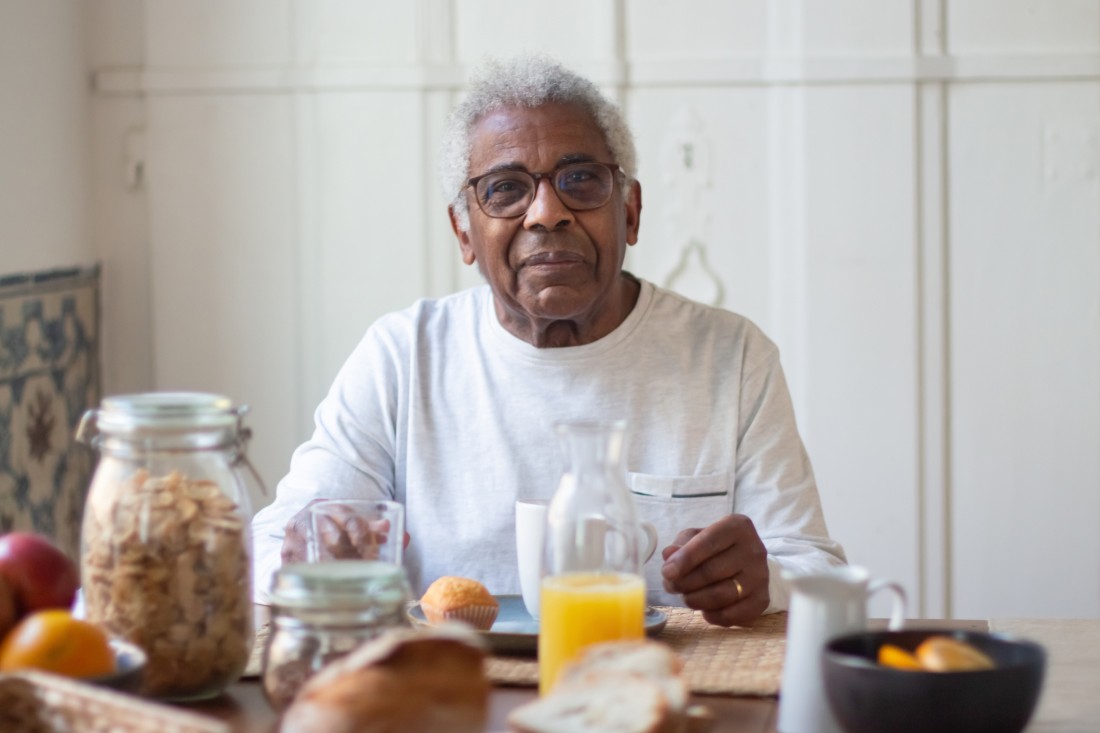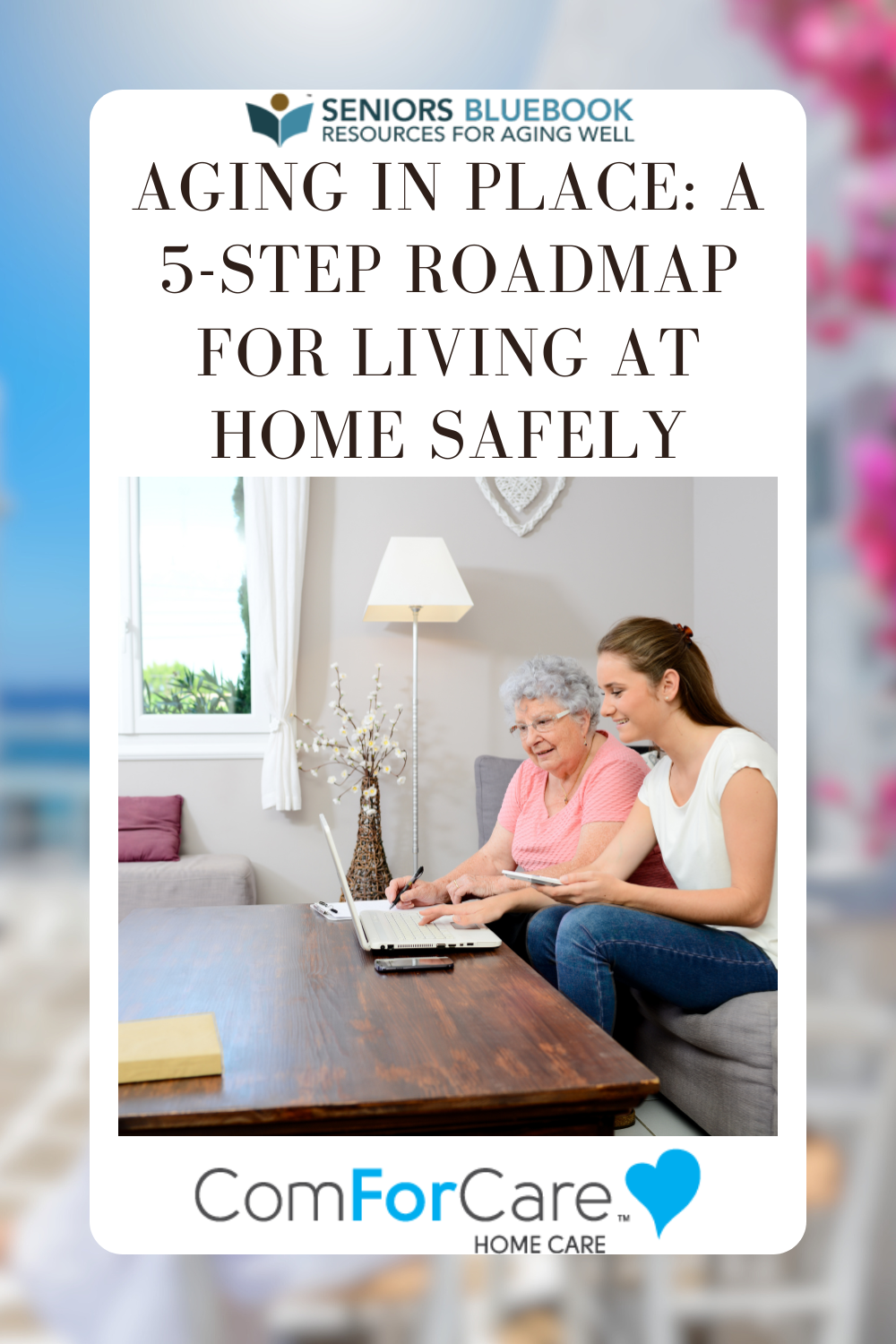Aging in Place: A 5-Step Roadmap for Living at Home Safely
ComForCare Home Care Northern Colorado
For more information about the author, click to view their website: ComForCare Home Care Northern Colorado
Jul 11, 2023
Colorado - Northern Colorado
If you are reaching retirement age or have a loved one 65+, you may have heard the term “aging in place.” Aging in place simply means that you stay at home as you grow older, rather than entering a senior living community or moving in with family members. Over 75% of older adults want to stay in their current homes. But to honor those wishes, it’s important to have a plan in place.
As people grow older, their needs change. Maintaining physical health, safety, personal care, and mental health may all require you to make adjustments and even seek a helping hand. Fortunately, services like in-home care are making it possible for more adults to stay at home for longer periods of time.
If you or a loved one is approaching their senior years, it’s important to put a plan in place now to ensure your preferences can be met safely. Let’s talk through the most important steps for making home a safe and healthy place to grow old.
Your Aging in Place Checklist: A Step-by-Step Guide
Whether you live alone, have a spouse that will soon need care, or are concerned about an aging parent, this list can help you plan ahead to ensure their safety and comfort.

Step 1: Assess the Kinds of Help You May Require
The first thing to consider is the types of care you or your loved one may be most likely to require in the near future. Some illnesses and long-term conditions can make getting around harder, such as diabetes or dementia. But even when medical care isn’t required, many seniors still need assistance with various other aspects of daily life.
In-home care services can help seniors with most of the support they need to stay in their own homes. With in-home care, you can add any of the services you need on a schedule of your choosing, including:
- Personal care
- Light housekeeping & chores
- Meal preparation
- Companion care
- Transportation
- Medication reminders & monitoring chronic conditions
Step 2: Make a Plan for Monitoring Health Conditions
While home care services don’t typically include skilled nursing care, they can help you manage chronic diseases. Between visits to your doctor, an in-home caregiver can check in and provide extra peace of mind, preventing disease progression and coordinating further care if and when needs change.
With services like remote patient monitoring (RPM), even seniors who don’t yet need full-time assistance can get a helping hand managing and tracking conditions like diabetes, high blood pressure, and more. RPM devices can even detect falls when no one else is in the home, ensuring that if an accident does happen, you or your loved one will receive the right care as quickly as possible.
Step 3: Complete a Home Safety Assessment
Every home has its unique quirks and features that need to be considered when making a plan to age in place. Therefore, the earlier you can start reducing hazards and making modifications, the better.
With a little pre-planning, making a home accessible for the elderly doesn’t have to happen all at once! We recommend starting before you need care and making at least one major modification per year to make your home an age-friendly place.
Safety Hazards to Watch For
- Electrical cords in walkways
- Cluttered rooms with too much furniture to navigate around
- Loose rugs without tape or slip-resistant backings
- Stairs without sturdy railing
- Outdoor steps with loose stones or rotting wood
Recommended Aging-in-Place Home Modifications
- Install grab bars and slip-resistant floor surfaces in bathrooms
- Move the main bedroom to the first floor
- Purchase kitchen appliances with safety features
- Replace round door knobs with lever handles
- Ensure ample and easily accessible lighting throughout the home (consider voice-activated smart lighting)
ComForCare is available to help—our teams perform thorough in-home assessments to develop customized care plans and make home safety recommendations. For more information on how to reduce fall risks in the home, download our free guide!
Step 4: Start Prioritizing Health & Nutrition
Regular activity, a balanced diet, and stress management are all important components of maintaining an independent lifestyle, managing health conditions, and reducing your risk of injuries. If you haven’t started setting these healthy habits, now is the best time to start. After all, nutrition needs change after 65, so it’s important to understand what you’ll need to accomplish your health goals.
It’s also important to be realistic about your ability to cook meals for yourself, which may be affected by changes that come with age. In-home caregivers can develop a personalized nutrition plan and prepare meals, helping you stay healthier—and therefore live at home—longer.
Step 5: Plan Ahead for Transportation & Social Connection
Staying connected to your community is extremely important, as isolation is one of the biggest risk factors for seniors living at home alone. Being able to go out to social events, make your doctor’s appointments, and reach local shopping areas for what you need is critical.
If your ability to drive is or becomes compromised, you need to understand what other options are available to you. For some, that could mean public transportation or getting rides from a loved one, but these options aren’t always realistic (or reliable) for everyone.
If transportation or isolation is a concern, home care services can help. Whether you need regular assistance getting to appointments or just need a ride on an as-needed basis, our care services can be tailored to your unique preferences.
Learn More About Whether In-Home Care is Right for You
At ComForCare, we pride ourselves on providing the highest quality senior care services in the comfort of our clients’ homes. Whether you need us for a few days each week or around the clock, our compassionate caregivers are ready to tailor services to you. Browse through our wealth of resources to learn more about the signs that it’s time for home care, how to talk about home care, and much more. Or contact your nearest location today to start a conversation!
- To view the original version of this article visit www.comforcare.com/blog/Aging-in-Place-A-5-Step-Roadmap-for-Living-at-Home-Safely_AE306.html
- Seniors Blue Book was not involved in the creation of this content.
Other Articles You May Like
Caring through the holiday
Bringing Comfort and Joy: How In-Home Care Transforms the Holidays for SeniorsThe holiday season is often associated with celebration, togetherness, and cherished traditions. But for many older adults, it can also be a time of loneliness, grief, or physical limitations. Fortunately, compassionate caregiving serviceslike those offered by Cornerstone Caregivingcan help bring warmth, connection, and joy back into the season for seniors and their families.Companionship When It Matters MostWhile festive decorations and family meals are central to the holidays, what seniors often need most is simple human connection. Caregivers can provide meaningful companionship through conversation, shared stories, and holiday-themed activities that help rekindle fond memories and lift spirits.Even small momentslike listening to holiday music or sipping cocoa togethercan brighten someones day when shared with a caring presence.Help With Holiday PreparationsThe physical demands of the seasonlike decorating the home, wrapping gifts, or preparing mealscan be overwhelming for seniors. Caregivers offer gentle support with these tasks, allowing older adults to stay involved in traditions without unnecessary stress.With extra help on hand, seniors can still enjoy the magic of the holidays, whether thats baking cookies, setting up festive lights, or simply writing holiday cards.Transportation to Seasonal EventsHoliday gatherings often take place outside the home, and limited mobility can make it hard for seniors to attend. Cornerstone Caregiving offers safe and reliable transportation so that your loved one doesnt miss out on family get-togethers, church services, or community events.This not only enhances inclusion but also helps seniors stay connected to the people and traditions they love most. Emotional Support Through Grief and ChangeFor many older adults, the holidays bring reminders of past losses or changes in family dynamics. Caregivers are trained to provide compassionate emotional support, offering a listening ear and heartfelt encouragement during emotionally sensitive times.This kind of support can be invaluable when the season brings more sorrow than celebration.Personalized Care for Every IndividualAt Cornerstone Caregiving, we believe that no two seniors are the same. Thats why our care plans are completely tailored to each individuals preferences, health needs, and routines. Whether its festive companionship, daily assistance, or specialized support, we meet each client where they arewith care that fits. The communication has been top notch! They are real professionals and truly care about their clients. Cody, Client Review Relief for Family CaregiversFamily members often carry the emotional and physical weight of caregiving, especially during the busy holiday season. Our in-home care services provide trusted respite, giving family caregivers time to rest, recharge, and enjoy their own holiday moments with peace of mind.Whether for a few hours or throughout the season, a helping hand can make all the difference.Give the Gift of Support This Holiday SeasonIf someone you love could benefit from companionship, transportation, or in-home support this winteror if youre a family caregiver in need of a breakit may be time to explore professional caregiving services. Schedule a personalized assessment with Cornerstone Caregiving and give your loved one the gift of dignity, joy, and connection this holiday season.
Helping seniors get dressed while preserving their independence
Supporting Seniors With Daily Dressing: Promoting Safety, Dignity, and IndependenceGetting dressed each morning is a routine task many of us take for grantedbut for older adults, this simple ritual can become physically demanding or even hazardous. Age-related changes in mobility, strength, and dexterity can make it difficultand in some cases, dangerousto dress without assistance.In fact, the Centers for Disease Control and Prevention (CDC) reports that nearly 36 million seniors experience a fall each year, and over 32,000 of those falls are fatal. Something as routine as putting on pants or fastening a shirt can present a serious fall risk if not properly supported.Encouraging Independence While Offering HelpDressing is an inherently personal act. Thats why its essential to approach this task with sensitivitybalancing safety with dignity. A caregiver can empower an older adult by encouraging them to participate in the dressing process as much as safely possible.Start by giving choices: Lay out two or three outfit options instead of opening the entire closet. This reduces decision fatigue, especially helpful for individuals experiencing cognitive decline, while still giving them a sense of autonomy and control.Choosing Clothing That Makes Dressing EasierThe type of clothing provided can make a significant difference in the dressing experience. Look for pieces that are simple to put on and take off, minimizing the need for fine motor control or complex movements.Here are some senior-friendly clothing alternatives: Pullover tops instead of shirts with buttons or snaps Elastic waistbands or drawstring pants in place of those with zippers or belts Velcro shoes or slip-ons to avoid the difficulty of tying laces By selecting easy-to-manage garments, you streamline the dressing process and reduce both frustration and potential injury.Take It SlowPatience MattersCaregivers should always allocate plenty of time for dressing. Rushing this activity can lead to agitation, confusion, or even physical discomfort. Since dressing usually marks the start of the day, setting a calm, unhurried tone is important for the seniors emotional well-being and overall mood.A Calm Start to a Safer DayHelping someone get dressed is about more than just clothingits about respect, comfort, and providing an environment that feels both supportive and safe. With the right mindset, proper tools, and compassionate care, dressing assistance can become a moment of connection rather than frustration.At Cornerstone Caregiving, we understand the importance of preserving independence while providing hands-on support. Our caregivers are trained to help with dressing and other personal care tasks in a respectful, empowering wayalways putting dignity first.Ready to Learn More? If you or a loved one could benefit from daily assistance with tasks like dressing, hygiene, and mobility, were here to help. Schedule a Free In-Home Assessment today and discover how compassionate care can make all the difference.
What is In-Home Care?
What Is In-Home Careand How Can It Support You or a Loved One?At Cornerstone Caregiving, in-home care isnt just a serviceits a philosophy of personalized, compassionate support that meets people exactly where they are: at home. Whether you're recovering from a hospital stay, managing a chronic condition, or simply seeking help with day-to-day activities, in-home care allows you to remain in the comfort of familiar surroundings while receiving the attention you need.But what does in-home care really involve? Lets take a closer look.Understanding In-Home CareIn-home care is designed to bring both medical and non-medical support right to your doorstep. It can include everything from personal assistance with daily routines to more advanced care overseen by healthcare professionals.At Cornerstone, our approach focuses on enhancing quality of life by promoting independence, safety, and emotional well-being. Whether someone is managing long-term health concerns or simply looking for a little extra help around the house, were here to offer flexible, compassionate care tailored to their specific situation.Two Types of In-Home CareThere are typically two categories of in-home care: Skilled CareInvolves medical care provided by licensed professionals, often following a doctors referral. Examples include: Medication administration Wound care Vital sign monitoring Physical, occupational, or speech therapy Non-Medical/Companion CareSupports daily living without requiring clinical training. This is where Cornerstone truly shines. Services may include: Help with dressing, bathing, and grooming Meal prep and feeding assistance Light housekeeping and laundry Medication reminders Transportation to appointments Safety monitoring and fall prevention Support for Alzheimers or dementia Companionship and emotional support We can provide care on our own or partner with your existing care providers or hospice team to create a more complete circle of support.Why Families Choose CornerstoneChoosing in-home care is deeply personaland we believe your care should feel just as personal. Thats why we tailor every service to the needs, preferences, and routines of each individual.Heres what sets Cornerstone Caregiving apart: No Hourly Minimums Whether you need 30 minutes or 24/7 care, were here when you need uswithout forcing you to pay for more than you require. Same-Day Service Available We can often begin services within hours of your initial request. Free In-Home Assessments Our team takes time to understand your lifestyle, goals, and care needs so we can match you with the right caregiver from the start. Veteran-Focused Support We proudly serve veterans and their families, helping them access the benefits and services theyve earned. How Is In-Home Care Funded?Payment options vary based on the type of care: Non-medical care is often funded privately, through long-term care insurance, or VA programs. Skilled medical care may be covered by Medicare, Medicaid, or private insurance if ordered by a physician. Our team can guide you through the available funding options and help simplify the process, so you can focus on carenot paperwork.The Benefits of In-Home Care Stay in a familiar, comfortable environment Reduce overall care costs compared to facilities Enjoy one-on-one attention tailored to your schedule Maintain independence and dignity Avoid unnecessary hospital or rehab stays Whether your needs are temporary or long-term, light or comprehensive, in-home care is one of the most adaptable ways to ensure your well-being without leaving home. Lets Talk About What You NeedYour health, time, and peace of mind matter. At Cornerstone Caregiving, were here to help you live life on your termswith the care, companionship, and flexibility you deserve. Call us today at (800) 410-2570 or fill out the form below to schedule your free in-home consultation. Lets build a care plan that fits your life.
Local Services By This Author
ComForCare Home Care - Northern Colorado
Non-Medical 561 East Garden Drive, Windsor, Colorado, 80550ComForCare is family-based. Laura and Chris the owners have both been caregivers for 30 years. Laura started as a caregiver when she was 16 and now has a masters degree in nursing. Chris was a career firefighter for 25 years. Through in-home care services, ComForCare Fort Collins helps older adults to stay in their own homes and continue to do all the things they love. Whether care is needed for a few hours a week or 24/7, our professional caregivers are available to provide the services you need.
ComForCare Home Care - Northern Colorado
Home Health 561 East Garden Drive, Windsor, Colorado, 80550ComForCare is family-based. Laura and Chris the owners have both been caregivers for 35 years. Laura started as a caregiver when she was 16 and now has a masters degree in nursing. Chris was a career firefighter for 25 years. Through in-home care services, ComForCare Fort Collins helps older adults to stay in their own homes and continue to do all the things they love. Whether care is needed for a few hours a week or 24/7, our professional caregivers are available to provide the services you need.



.gif)